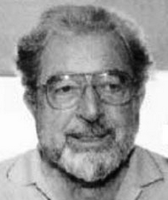










Forrest Corry Parry was the IBM engineer who invented the Magnetic stripe card used for Credit cards and identification badges.
A native of Cedar City, Utah, Forrest Parry was born on July 4, 1915. He attended the Branch Agricultural College and graduated from the U.S. Naval Academy at Annapolis, Maryland. During the Korean War, Parry served in the Navy as first lieutenant aboard the USS Walke. In 1951, the ship was either hit by a torpedo or struck a mine, killing 26 sailors and wounding 40. Parry’s conduct during the incident earned him the Navy’s Bronze Star with Valor. After the war, Parry worked at California’s Lawrence Livermore National Laboratory, beginning his illustrious career with IBM in 1957. Early on, he helped develop the Universal Product Code (UPC), high-speed printing systems and an advanced optical character reader. However, it was Parry’s invention of the magnetic stripe that would establish him as one of IBM’s great innovators.
In 1960, while at IBM, Parry invented the magnetic stripe card for use by the U.S. Government. He had the idea of gluing short pieces of magnetic tape to each plastic card, but the glue warped the tape, making it unusable. When he returned home, Parry's wife Dorothea was using a flat iron to iron clothes. When he explained his inability to get the tape to "stick" to the plastic in a way that would work, she suggested that he use the iron to melt the stripe onto the card. He tried it and it worked.The heat of the iron was just high enough to bond the tape to the card. Magnetic stripes are now used on credit cards, debit cards, gift cards, stored-value cards, hotel keycards, and security identification badges.
Years after the death of his first wife Dorothea, Parry married La Faun W. Elder in 1983. After Parry retired from IBM in 1987, he and La Faun lived in St. George, Utah until her death in 1996 and Parry's death in 2005.